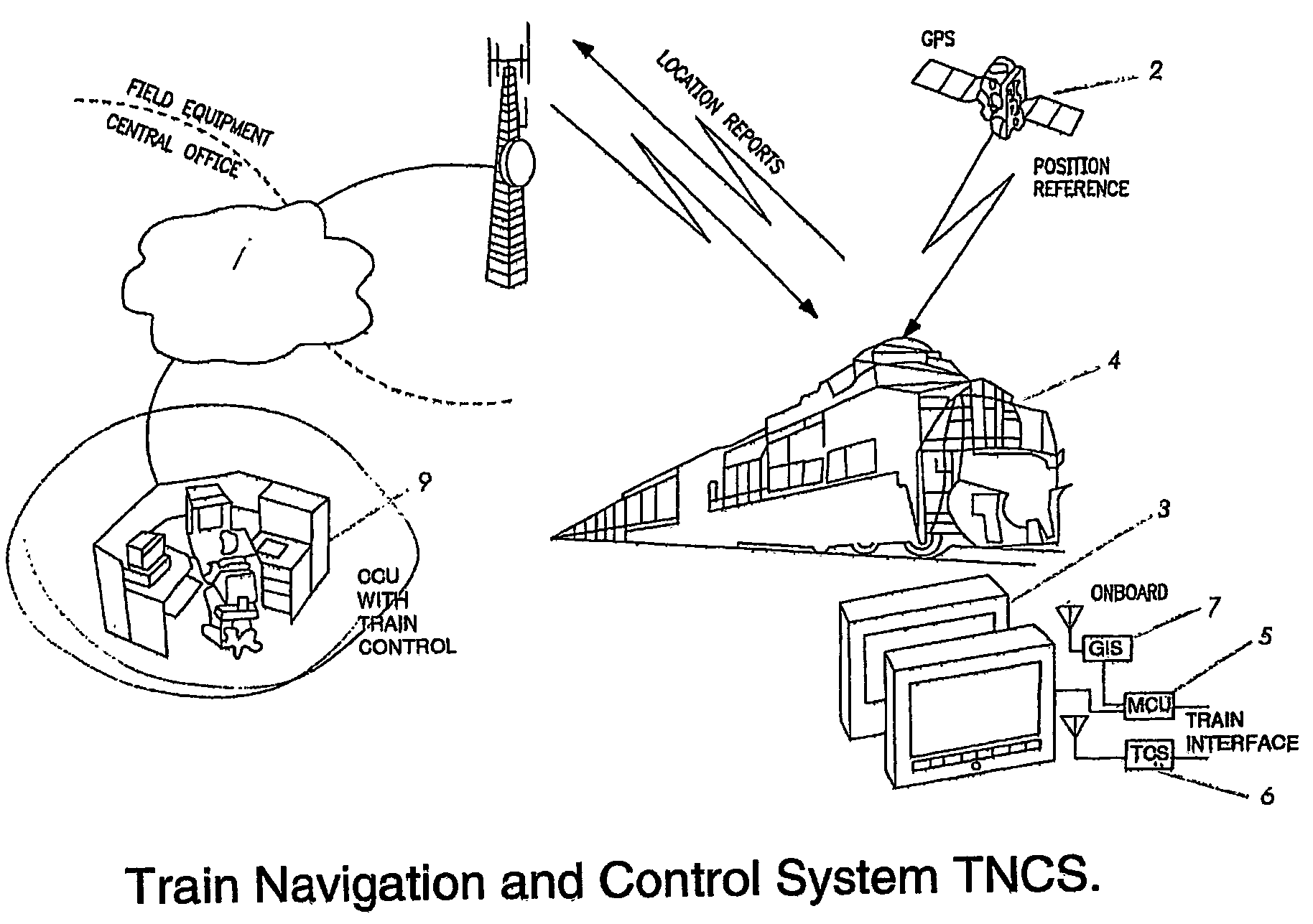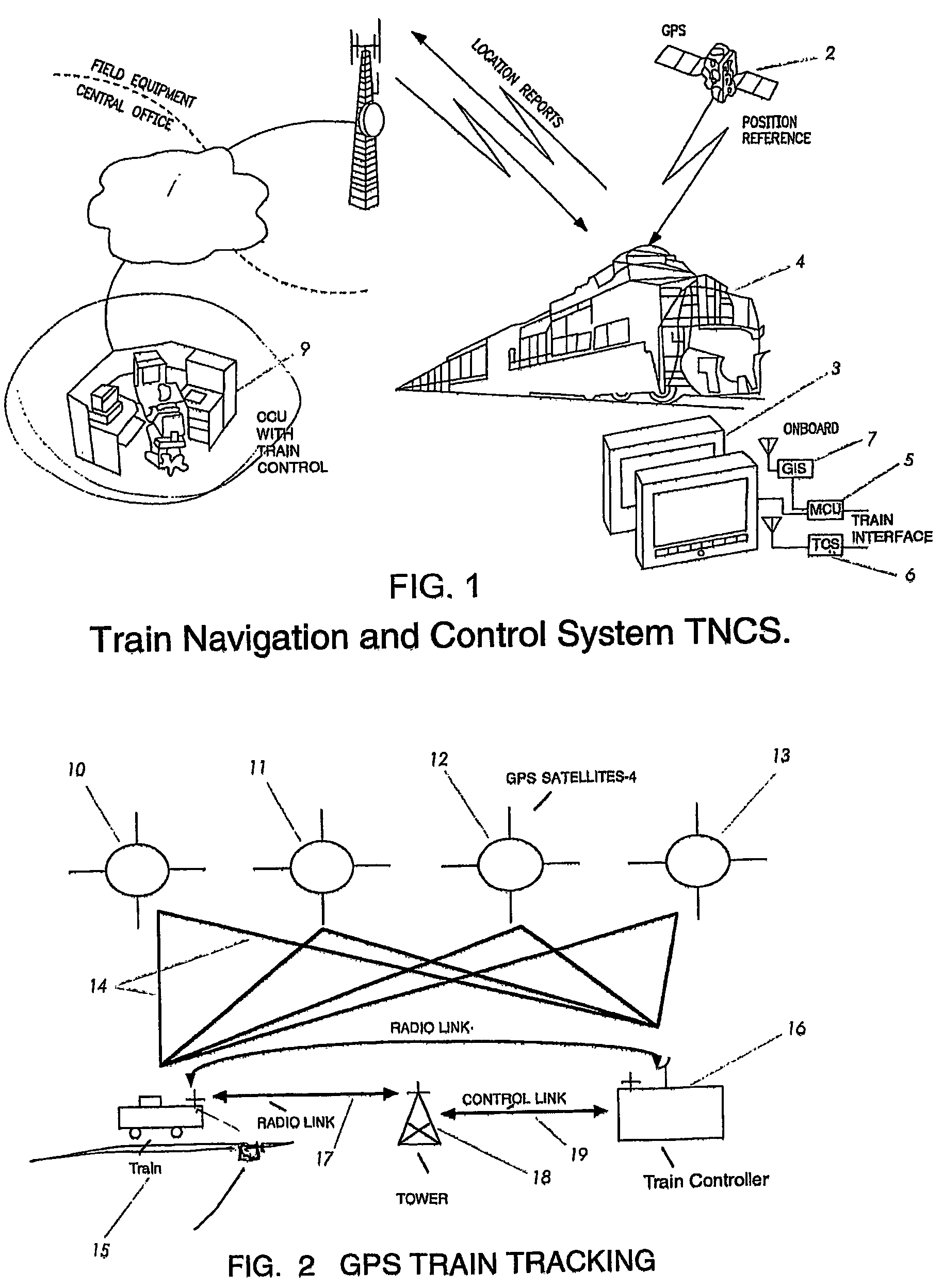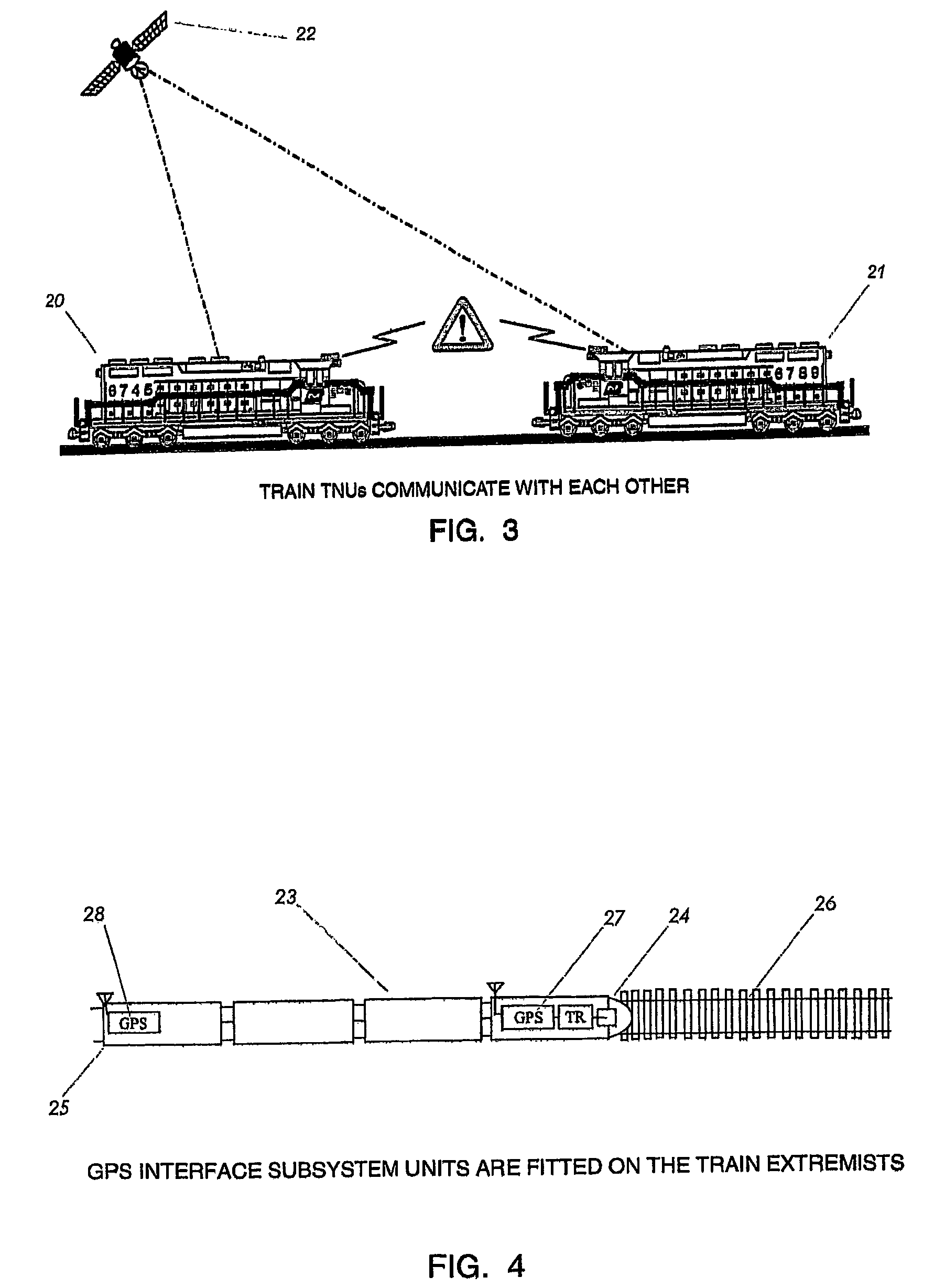Vehicle navigation, collision avoidance and control system
a technology of collision avoidance and control system, which is applied in the direction of transmission, electrical equipment, railway components, etc., can solve the problems of the main lobe angular width, the angular resolution of the microwave radar, and the difficulty of making a reasonable size microwave radar with beam width less than 3 degrees, so as to improve the accuracy of gps ranging signals and accurately determine one's position. , the effect of improving the accuracy of the gps ranging signal
- Summary
- Abstract
- Description
- Claims
- Application Information
AI Technical Summary
Benefits of technology
Problems solved by technology
Method used
Image
Examples
Embodiment Construction
[0158]The present invention in one broad form provides a computer controlled collision avoidance and warning system in which signals are received by at least one vehicle on a first communication link from a GPS satellite link for determining the position of that vehicle. The invention further provides a second communications link in which at least one of a plurality of vehicles receive continuously a signal concerning the position of at least one other vehicle so that each vehicle known the position of another vehicle so that evasive action may be taken in the event of a collision. The first communications link is a GPS receiver and the second communications link is a GPS transceiver each operating on separate predetermined frequencies. (see FIG. 2).
[0159]Although the present invention will be described with reference to its application to train collision warning it will be appreciated by persons skilled in the art that the invention has applications for vehicle collision management...
PUM
 Login to View More
Login to View More Abstract
Description
Claims
Application Information
 Login to View More
Login to View More - R&D
- Intellectual Property
- Life Sciences
- Materials
- Tech Scout
- Unparalleled Data Quality
- Higher Quality Content
- 60% Fewer Hallucinations
Browse by: Latest US Patents, China's latest patents, Technical Efficacy Thesaurus, Application Domain, Technology Topic, Popular Technical Reports.
© 2025 PatSnap. All rights reserved.Legal|Privacy policy|Modern Slavery Act Transparency Statement|Sitemap|About US| Contact US: help@patsnap.com



